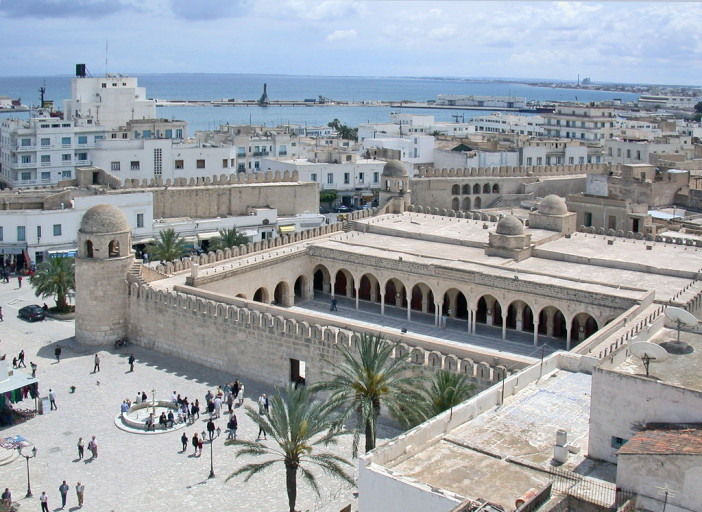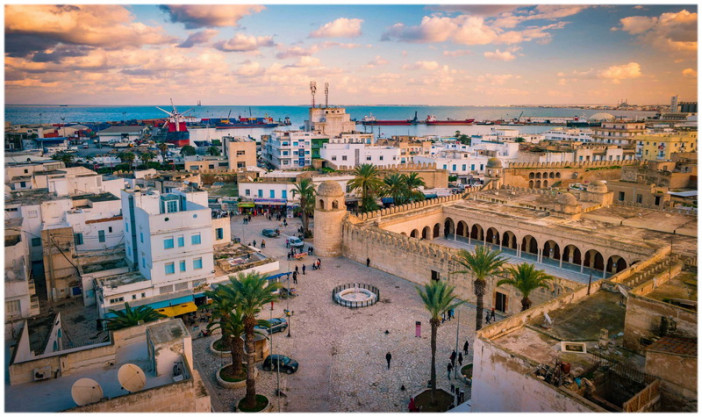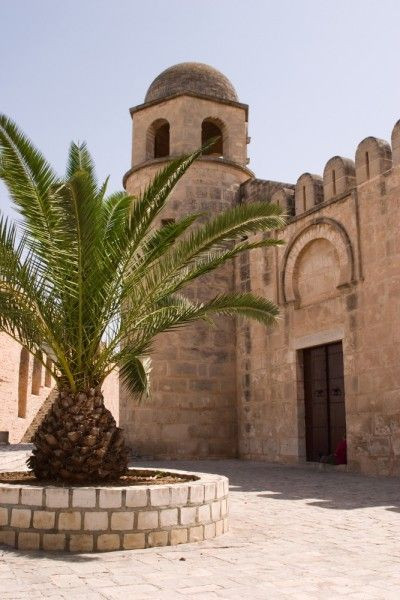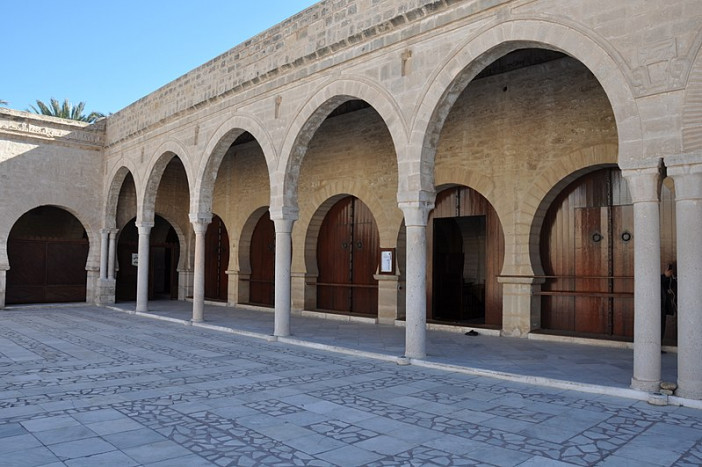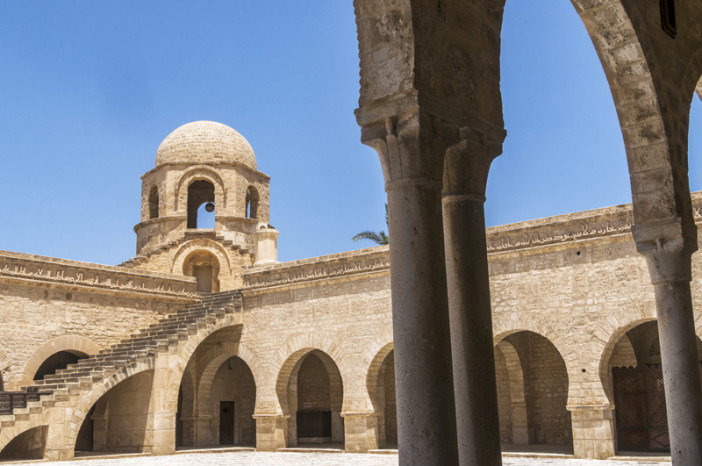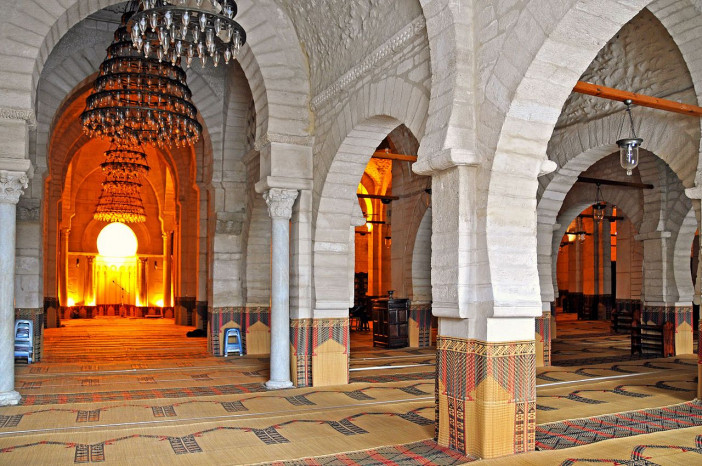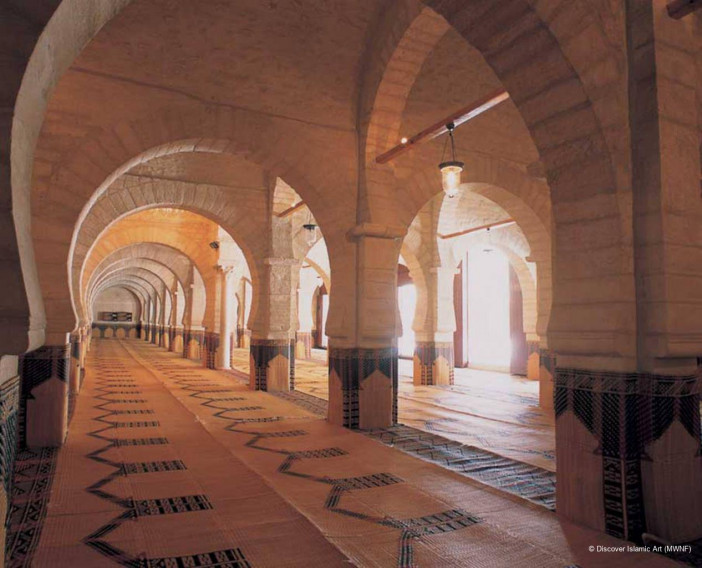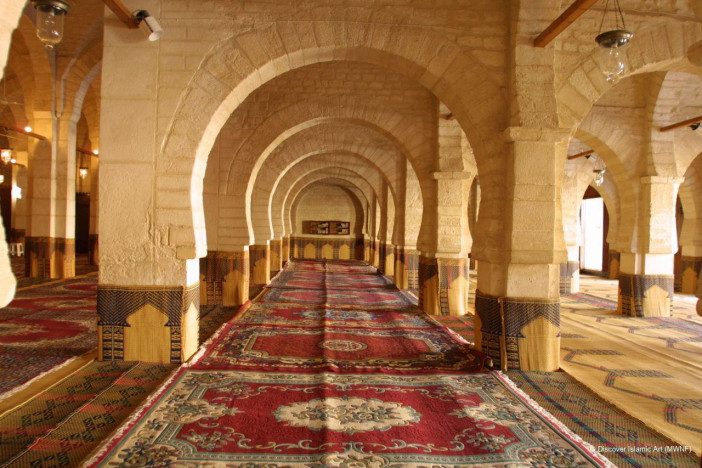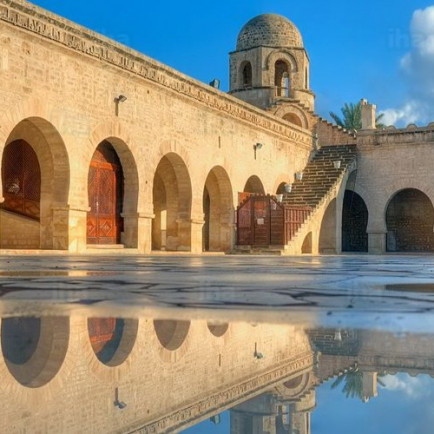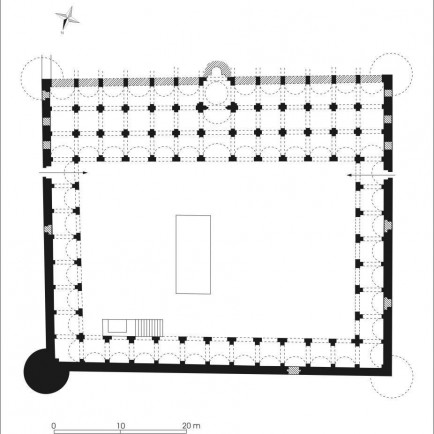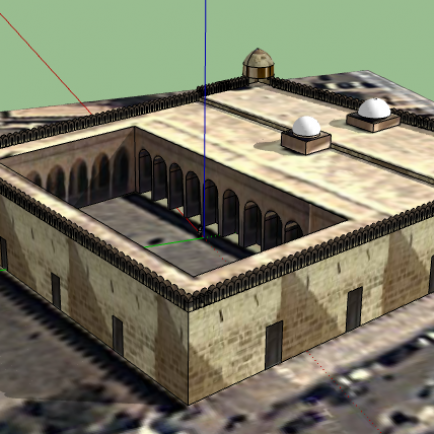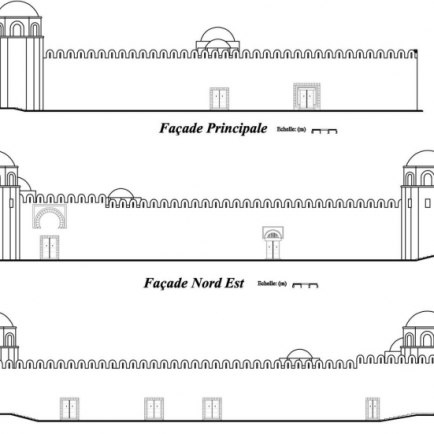The Great Mosque of Sousse
History
The Great Mosque of Sousse, a masterpiece of the 9th century, it was founded in 851, its construction was thirty years later than that of the Ribat of Sousse, located about fifty meters away, at the location exact of the current Mosque, it was redesigned and enlarged during the 10th and 17th centuries, it adjoins the Ribat from which it inherited the fortified aspect with a crenellated enclosure wall and flanked by two watchtowers facing the shore where assailants from overseas could emerge.
Urban and Architectural
Without a Minaret, surrounded by a thick wall that looks both pure and massive, but also due to its location as an outpost at the eastern end of the Medina, the Great Mosque of Sousse is confusing and strongly evokes a supposed fortress protect the city and its port from the assaults of the conquerors.
Devoid of sophisticated decorations, The Great Mosque of Sousse sports a simple, imposing and austere style, its main building materials were shell sandstone, wood and marble, well surrounded by a crenellated wall nearly one meter thick.
Its upper zone is decorated with an inscription with inclined letters, comprising 13 naves and 3 barrel-shaped bays resting on cruciform pillars. In the center of the prayer hall, above the axial nave, there is a cupola from the Aghlabid period, resting on a square base and shell corner squinches thus recalling the Ribat of Sousse or the Great Mosque of Kairouan.
Description
Dynasty: Aghlabid
Patron: Prince Abu al-‘Abbas Muhammad al-Aghlabi.
References
https://islamicart.museumwnf.org/database_item.php?id=monument;ISL;tn;Mon01;5;en
https://www.qantara-med.org/public/show_document.php?do_id=406&lang=en
Details
Location
In the Medina, Sousse 4000, Tunisia
Worshippers
800
Owners
The Tunisian Government
Year of Build
851–862
Area
3000
Drawings
Map
History
The Great Mosque of Sousse, a masterpiece of the 9th century, it was founded in 851, its construction was thirty years later than that of the Ribat of Sousse, located about fifty meters away, at the location exact of the current Mosque, it was redesigned and enlarged during the 10th and 17th centuries, it adjoins the Ribat from which it inherited the fortified aspect with a crenellated enclosure wall and flanked by two watchtowers facing the shore where assailants from overseas could emerge.
Urban and Architectural
Without a Minaret, surrounded by a thick wall that looks both pure and massive, but also due to its location as an outpost at the eastern end of the Medina, the Great Mosque of Sousse is confusing and strongly evokes a supposed fortress protect the city and its port from the assaults of the conquerors.
Devoid of sophisticated decorations, The Great Mosque of Sousse sports a simple, imposing and austere style, its main building materials were shell sandstone, wood and marble, well surrounded by a crenellated wall nearly one meter thick.
Its upper zone is decorated with an inscription with inclined letters, comprising 13 naves and 3 barrel-shaped bays resting on cruciform pillars. In the center of the prayer hall, above the axial nave, there is a cupola from the Aghlabid period, resting on a square base and shell corner squinches thus recalling the Ribat of Sousse or the Great Mosque of Kairouan.
Description
Dynasty: Aghlabid
Patron: Prince Abu al-‘Abbas Muhammad al-Aghlabi.


